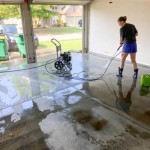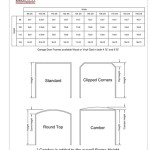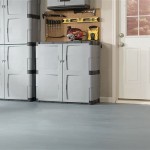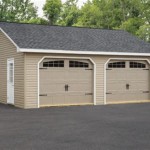Craft a DIY Workbench for Your Home Garage
A well-constructed workbench is essential for any home garage, offering a dedicated space for DIY projects, repairs, and hobbies. Building a custom workbench allows for tailoring the design to specific needs and preferences, often at a lower cost than purchasing a pre-built unit. This article provides a comprehensive guide to crafting a durable and functional DIY workbench.
Planning and Design: Before purchasing materials, careful planning is crucial. Consider the intended use of the workbench. Woodworking requires a robust and stable surface, while electronics repair may necessitate a static-dissipative worktop. Determine the desired dimensions, including height, width, and depth, ensuring the workbench fits comfortably within the garage space and accommodates intended projects. Sketching a design, including shelf placement and drawer configurations, helps visualize the final product.
Material Selection: Choosing the right materials directly impacts the workbench's durability and longevity. For the frame, construction-grade lumber like 2x4s and 4x4s offers excellent strength and stability. Consider pressure-treated lumber for enhanced moisture resistance, particularly if the garage experiences humidity fluctuations. For the work surface, several options exist. Solid wood like maple or oak provides a durable and attractive surface, while plywood offers a cost-effective alternative. MDF (medium-density fiberboard) can also be utilized but requires sealing to prevent moisture absorption. Consider adding a layer of hardboard or melamine for increased durability and resistance to scratches and spills.
Construction Process: Begin by assembling the frame. Cut the lumber to the predetermined dimensions using a saw, ensuring accurate measurements for a square and stable frame. Join the frame pieces using screws and wood glue for maximum strength. Add cross bracing for increased rigidity, particularly for longer workbenches. Once the frame is assembled, attach the work surface. Securely fasten the worktop to the frame using screws, ensuring it is flush with the frame edges.
Adding Drawers and Shelves: Incorporating drawers and shelves significantly enhances the workbench's functionality and organization. Pre-made drawer units can be purchased and installed, or custom drawers can be built using plywood or other suitable materials. Drawer slides rated for the intended weight capacity should be selected. Shelves can be constructed using plywood or solid wood and supported by brackets or cleats attached to the frame. Consider adjustable shelving for maximum flexibility.
Finishing Touches: After assembling the workbench, consider applying a protective finish. A clear sealant or paint protects the wood from moisture, scratches, and spills. Consider adding a vise for securing workpieces, and install lighting to improve visibility. Pegboards or magnetic strips can be mounted to the back wall for tool organization.
Worktop Considerations: The worktop is arguably the most important component of a workbench. Different materials offer varying levels of durability, resistance, and cost-effectiveness. Hardwood offers excellent durability and a classic aesthetic, but can be expensive. Plywood provides a good balance of affordability and durability. MDF is a cost-effective option but requires sealing against moisture. Consider adding a protective layer like hardboard or melamine for increased durability and ease of cleaning. For specialized applications, consider materials like stainless steel for welding or static-dissipative mats for electronics work.
Ergonomics and Comfort: Design the workbench with ergonomics in mind. The height should allow for comfortable working without stooping or straining. Consider adding a footrest for improved posture. Adequate lighting is crucial for preventing eye strain. Ensure ample space around the workbench for movement and maneuverability.
Customization and Accessories: The beauty of a DIY workbench lies in its customizability. Tailor the design to specific needs and preferences. Add specialized features like built-in power strips, USB charging ports, or dedicated compartments for specific tools. Consider incorporating a tool storage system, such as drawers, cabinets, or pegboards, to keep the workspace organized and efficient.
Safety Precautions: Always prioritize safety when building and using a workbench. Wear appropriate safety gear, including eye protection, gloves, and hearing protection when using power tools. Ensure the workbench is stable and secure to prevent accidents. Follow manufacturer instructions for all tools and equipment. Maintain a clean and organized workspace to minimize hazards.
Maintenance and Care: Regular maintenance ensures the workbench remains functional and durable for years to come. Clean the work surface regularly to remove dust, debris, and spills. Inspect the frame and hardware periodically for loose connections or damage. Reapply sealant or paint as needed to protect the wood from moisture and wear. Proper maintenance extends the lifespan of the workbench and ensures a safe and productive workspace.

Build A Basic Workbench Tylynn M

The 10 Best Garage Workbench Builds

Diy Workbench Design Fit For A Junker Prodigal Pieces

How To Build A Diy Workbench Super Simple 50 Bench

Easy Diy Workbench Mobile With Storage 9 Steps Pictures Instructables

Super Easy Diy Workbench Wilker Do S Plans Garage Work Bench

And Easy Garage Workbench 3 Steps Instructables

How To Build A Rolling Workbench Follow This Simple Diy Plans

How To Build A Work Bench For Garage Lowe S

14 Super Simple Workbenches You Can Build The Family Handyman
Related Posts








